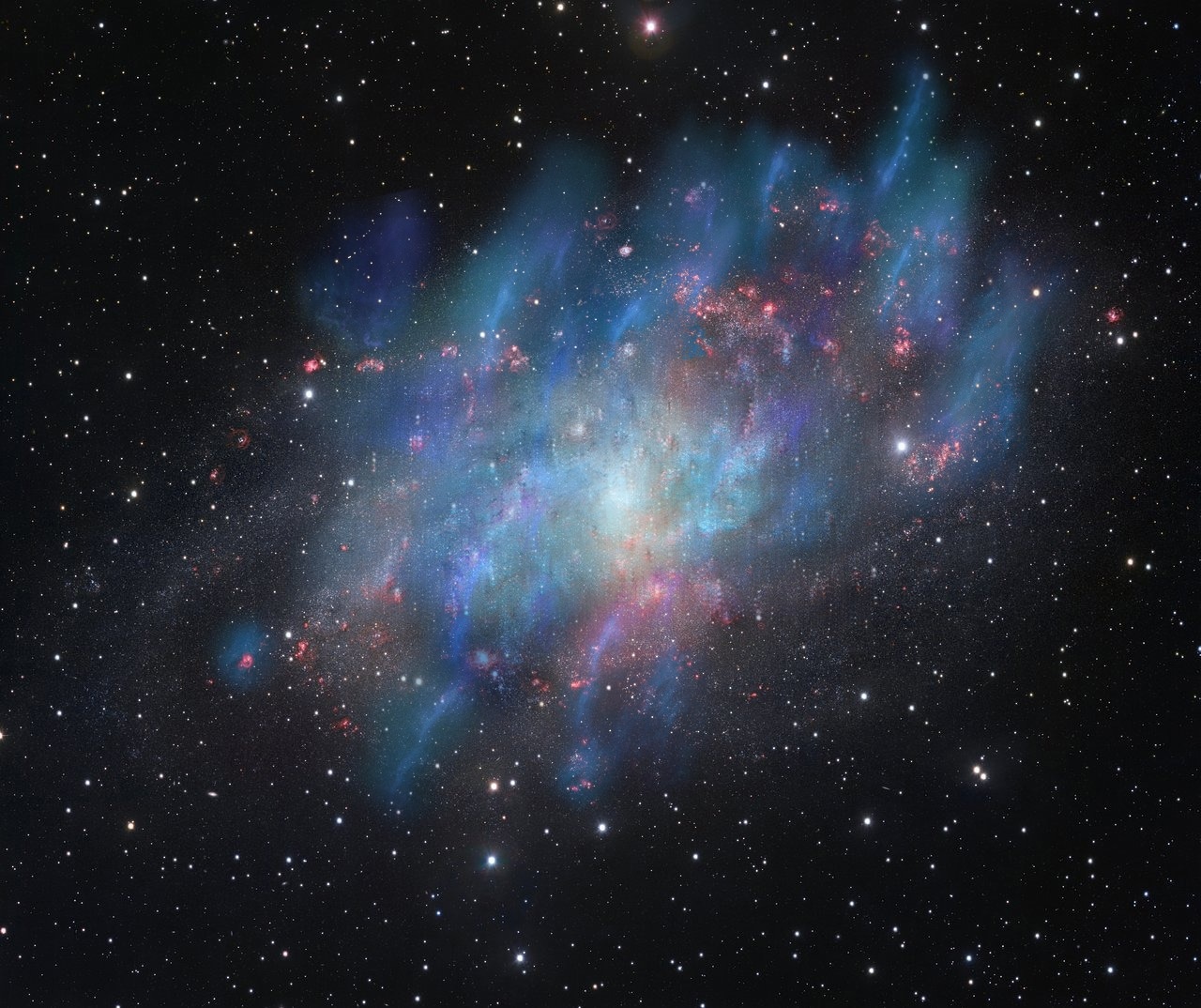Reviewed by Mila PereraOct 26 2022
A significant new clue regarding how galaxies slowed vigorous episodes of star formation has been found by astronomers utilizing the National Science Foundation’s Karl G. Jansky Very Large Array (VLA).

Artist's illustration of cosmic ray driven winds (blue and green) superimposed on a visible-light image of the Triangulum galaxy M33 (red and white) observed with VLT Survey Telescope at ESO’s Paranal Observatory in Chile. Image Credit: Institute for Research in Fundamental Sciences- IPM & European Southern Observatory (ESO)
Their new study on the neighboring galaxy M33 denotes that fast-paced cosmic ray electrons could drive winds that blow away the gas required to develop new stars.
Such winds are accountable for decelerating the star formation rate as galaxies tend to develop over time. But shock waves from supernova explosions and energetic, black hole-powered jets of material from galactic cores have been known to be the main drivers of those winds.
Cosmic rays were considered slight contributors, especially in galaxies like M33, consisting of prolific star formation regions.
We have seen galactic winds driven by cosmic rays in our own Milky Way and the Andromeda galaxy, which have much weaker rates of star formation, but not before in a galaxy such as M33.
Fatemah Tabatabaei, Institute for Research in Fundamental Sciences
Tabatabaei and an international research group made elaborate, multi-wavelength VLA observations of M33, a spiral galaxy around three million light-years away and part of the Local Group of galaxies that comprises the Milky Way.
Additionally, they utilized data obtained from earlier observations with the VLA, the Effelsberg radio telescope in Germany, and millimeter-wave, infrared, and visible-light telescopes.
Stars that are more massive than the sun speed through their life cycles, eventually bursting as supernovae. The explosive shock waves could expedite particles to almost the speed of light, thereby making cosmic rays. Enough of such cosmic rays could build pressure that drives winds taking away the gas required to continue forming stars.
The VLA observations indicated that cosmic rays in M33 are escaping the regions where they are born, making them able to drive more extensive winds.
William Cotton, National Radio Astronomy Observatory
Based on their observations, the astronomers concluded that the several supernova remnants and supernova explosions in M33’s huge complexes of prolific star formation made these cosmic ray-driven winds more likely.
This means that cosmic rays probably are a more general cause of galactic winds, particularly at earlier times in the universe’s history, when star formation was happening at a much higher rate. This mechanism thus becomes a more important factor in understanding the evolution of galaxies over time.
Fatemah Tabatabaei, Institute for Research in Fundamental Sciences
Journal Reference
Tabatabaei, F. S., et al. (2022) Cloud-scale Radio Surveys of Star Formation and Feedback in Triangulum Galaxy M 33: VLA Observations. Monthly Notices of the Royal Astronomical Society. doi.org/10.48550/arXiv.2209.01389.